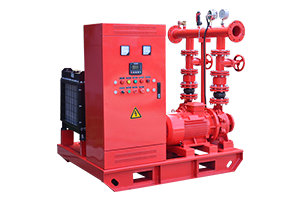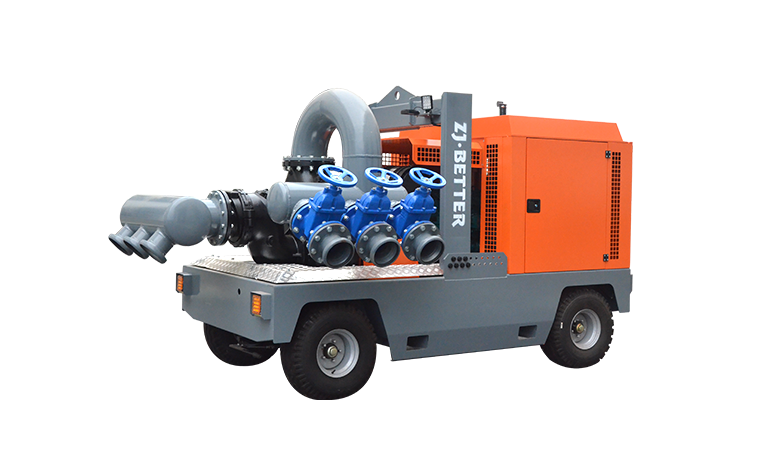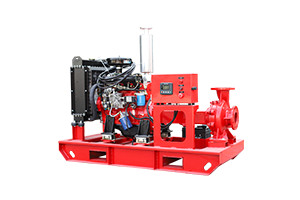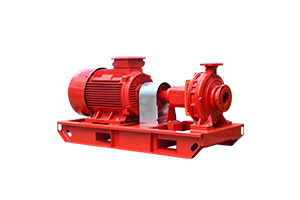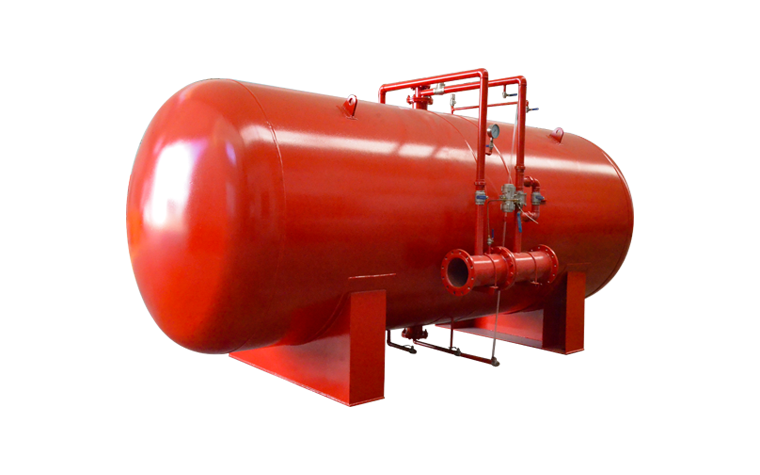-
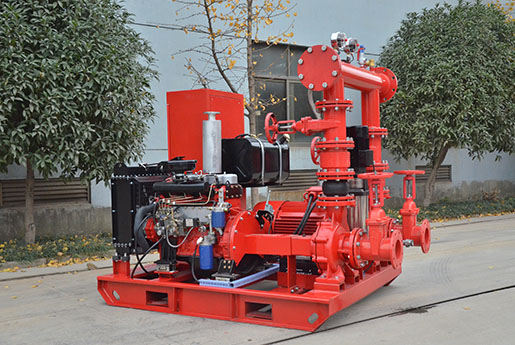 Sep 11, 2023Fire pump energy-saving operation principleEnergy-saving operation principles for fire pumps are crucial to ensure that these critical systems are efficient while maintaining their effectiveness during firefighting emergencies. Here are some key principles for energy-saving operation of fire pumps:View details
Sep 11, 2023Fire pump energy-saving operation principleEnergy-saving operation principles for fire pumps are crucial to ensure that these critical systems are efficient while maintaining their effectiveness during firefighting emergencies. Here are some key principles for energy-saving operation of fire pumps:View details -
.jpg) Sep 08, 2023How to improve centrifugal pump efficiency?Improving the efficiency of a centrifugal pump is essential to reduce energy consumption, save operating costs, and prolong the life of the equipment. Here are several ways to enhance centrifugal pump efficiency:
Sep 08, 2023How to improve centrifugal pump efficiency?Improving the efficiency of a centrifugal pump is essential to reduce energy consumption, save operating costs, and prolong the life of the equipment. Here are several ways to enhance centrifugal pump efficiency:
Select the Right Pump: Ensure that the pump you are using is properly sized for the specific application. Undersized or oversized pumps can result in inefficiency. Consult with a pump engineer to determine the correct pump size and type for your needs.
Maintain Proper Pump Speed: Operating the pump at or near its best efficiency point (BEP) on the performance curve can significantly improve efficiency. Avoid over-speeding or under-speeding the pump, as this can lead to reduced efficiency.
Regular Maintenance: Implement a thorough maintenance program that includes routine inspections and servicing. This should involve lubricating bearings, checking seals, and monitoring for wear on impellers and volutes.
Optimize Impeller Design: If possible, consider upgrading to a high-efficiency impeller design or optimizing the existing impeller for your specific application. The impeller is a critical component that directly impacts pump efficiency.
Reduce Friction Losses: Minimize friction losses in the system by using appropriately sized pipes and fittings. Smooth pipe walls, fewer bends, and properly sized valves can reduce friction and increase pump efficiency.
Eliminate Air and Gas Entrapment: Ensure that the pump is properly primed and that there is no air or gas entrapped in the system. Air pockets can reduce pump efficiency and potentially cause cavitation.
Maintain Proper Clearances: Maintain the proper clearances between rotating and stationary components, such as wear rings and seal clearances. Excessive clearances can lead to internal recirculation and efficiency loss.
Optimize Pump Speed: Consider using variable frequency drives (VFDs) to adjust the pump speed based on system demand. This allows the pump to operate at or near its BEP across a range of flow rates, improving efficiency.
Use Efficient Motors: Ensure that the electric motor driving the pump is appropriately sized and has a high efficiency rating. Energy-efficient motors can significantly reduce energy consumption.
Install Efficient Mechanical Seals: Consider using mechanical seals with low leakage rates to minimize energy loss due to seal friction and leakage.
Proper Alignment: Ensure that the pump and motor are correctly aligned. Misalignment can lead to vibration and reduced efficiency.
Monitor and Control System Parameters: Implement a control system that can monitor and adjust system parameters such as flow rate, pressure, and temperature to optimize pump operation.
Reduce System Head: Evaluate the system's pressure requirements and minimize unnecessary head loss through the use of properly sized components and efficient system design.
Regularly Check Pump Speed and Flow: Monitor the pump's speed and flow rate to ensure it remains within the specified operating range. Adjustments may be necessary to maintain efficiency.
Educate Operators: Train pump operators to recognize signs of inefficiency, such as unusual noise, vibration, or pressure fluctuations. Prompt action can prevent further efficiency loss.
Consider System Redesign: In some cases, a complete redesign of the pumping system may be necessary to improve efficiency significantly. This could involve changing pipe layouts, adding parallel pumps, or modifying the system's configuration.
Improving centrifugal pump efficiency is an ongoing process that requires careful attention to system design, maintenance, and operational practices. Regular monitoring and optimization efforts can help maximize efficiency and reduce energy costs over the long term.
View details -
 Sep 08, 2023What should be paid attention to in the use of fire pumps?The use of fire pumps is a crucial component of fire protection systems, and it's essential to operate them correctly to ensure their effectiveness in case of a fire emergency. Here are some key considerations for the proper use of fire pumps:
Sep 08, 2023What should be paid attention to in the use of fire pumps?The use of fire pumps is a crucial component of fire protection systems, and it's essential to operate them correctly to ensure their effectiveness in case of a fire emergency. Here are some key considerations for the proper use of fire pumps:
Training and Personnel: Ensure that personnel responsible for operating the fire pump are trained and knowledgeable about its operation. Training should cover the use of controls, start-up procedures, and shutdown procedures.
Emergency Procedures: Establish and communicate clear emergency procedures for activating the fire pump in the event of a fire. Ensure that designated personnel know how to initiate the pump and respond quickly to alarms or fire detection systems.
Regular Testing: Conduct regular tests and inspections of the fire pump to ensure it is in proper working order. This includes weekly or monthly flow tests and annual full-load tests. Testing should be carried out in accordance with local codes and standards.
Maintenance: Prioritize routine maintenance to keep the fire pump in optimal condition. This includes lubricating moving parts, checking for leaks, inspecting electrical components, and verifying the condition of belts, if applicable.
Power Supply: Ensure that the fire pump has a reliable power supply. Backup power sources such as diesel engines or generators should be regularly tested to ensure they function when needed.
Fuel Supply: If the fire pump is diesel-powered, maintain an adequate and clean fuel supply. Diesel fuel should be treated to prevent contamination and algae growth.
Monitoring and Alarms: Install monitoring systems and alarms to alert personnel to any issues with the fire pump or the water supply. This includes monitoring water pressure, pump status, and system alarms.
Valve Operation: Familiarize personnel with the operation of suction and discharge valves. Ensure that these valves are open when the fire pump is in operation and closed when not in use.
Pressure Control: Understand the required pressure and flow rates for the specific fire protection system. Ensure that the fire pump can provide the necessary pressure to the sprinkler system or hydrants.
Remote Operation: Some fire pumps may be capable of remote operation. Ensure that personnel authorized to operate the pump remotely are trained and have secure access to the control system.
Documentation: Keep detailed records of all tests, inspections, and maintenance activities related to the fire pump. This documentation is essential for compliance, insurance, and auditing purposes.
Compliance: Stay informed about local fire codes and regulations to ensure that the fire pump system remains compliant with current standards. Compliance is critical for safety and legal reasons.
Spare Parts: Maintain a stock of critical spare parts to minimize downtime in case of component failure. Ensure that these parts are compatible with your specific fire pump model.
Regular Inspections: Schedule regular inspections by qualified technicians or engineers to assess the overall condition of the fire pump system and recommend any necessary repairs or upgrades.
Communication: Establish clear communication channels and procedures for coordinating with local fire departments in case of a fire emergency. They may need to be aware of the status of your fire pump system.
Proper use and maintenance of fire pumps are essential for the safety of occupants and the protection of property in the event of a fire. Regular training, testing, and maintenance procedures should be followed diligently to ensure the reliability of the fire pump system.
View details -
 Sep 07, 2023Head of fire pumpThe "head" of a fire pump refers to the pressure or force that the pump can generate to move water through a fire protection system. The head of a fire pump is typically measured in feet (or meters) and represents the vertical distance from the pump's discharge outlet to the highest point in the fire protection system where water needs to be delivered. It is a critical factor in determining whether the fire pump can provide sufficient pressure to meet the system's requirements.View details
Sep 07, 2023Head of fire pumpThe "head" of a fire pump refers to the pressure or force that the pump can generate to move water through a fire protection system. The head of a fire pump is typically measured in feet (or meters) and represents the vertical distance from the pump's discharge outlet to the highest point in the fire protection system where water needs to be delivered. It is a critical factor in determining whether the fire pump can provide sufficient pressure to meet the system's requirements.View details -
 Sep 07, 2023What problems should be paid attention to in the installation of fire pump pipelines?Installing fire pump pipelines is a critical part of a fire protection system, and it must be done correctly to ensure the system's reliability and effectiveness. Here are some key problems and considerations to pay attention to during the installation of fire pump pipelines:View details
Sep 07, 2023What problems should be paid attention to in the installation of fire pump pipelines?Installing fire pump pipelines is a critical part of a fire protection system, and it must be done correctly to ensure the system's reliability and effectiveness. Here are some key problems and considerations to pay attention to during the installation of fire pump pipelines:View details -
 Sep 06, 2023Measures to prevent fire pump cavitationPreventing cavitation in a fire pump is crucial to ensure its reliable performance during firefighting operations. Here are several measures and best practices to help prevent fire pump cavitation:View details
Sep 06, 2023Measures to prevent fire pump cavitationPreventing cavitation in a fire pump is crucial to ensure its reliable performance during firefighting operations. Here are several measures and best practices to help prevent fire pump cavitation:View details

